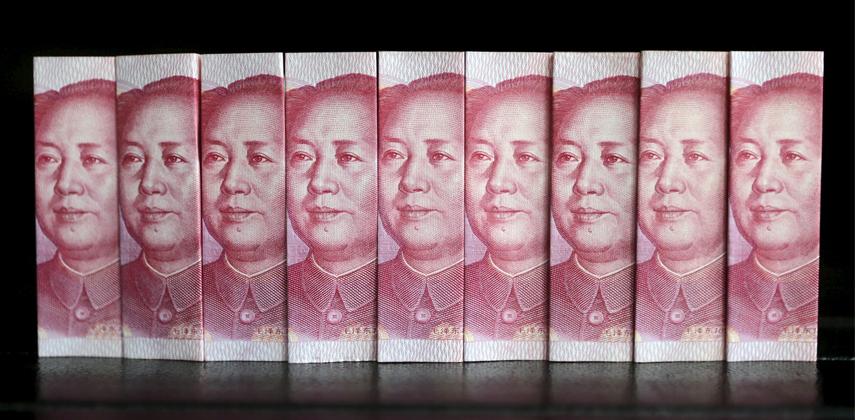According to some experts, the dramatic devaluation of the yuan in August was the ultimate expression of Beijing’s desire to have the markets play a greater role in setting the value of the currency. While investors, governments and markets adjust to the impact of a weaker yuan, there are likely to be further changes ahead.
E Zhihuan, head of economic analysis and research at Bank of China (Hong Kong), says further changes in the value of the yuan – in both directions – lie ahead.
“Against a basket of major currencies and adjusted for inflation, the RMB remains the second strongest currency after the dollar,” she told the South China Morning Post ahead of the Hong Kong Institute of Bankers Annual Banking Conference.
“The change to the reference rate setting mechanism merely reflects the changes in economic fundamentals and market dynamics. Looking ahead, the RMB is likely to fluctuate in both directions in response to economic and market conditions.”
She sees any pronouncement that the yuan has entered a prolonged period of depreciation as premature, saying the People’s Bank of China (PBOC) has made it clear that the mainland’s central bank is not pursuing a strategy of devaluation.
Ba Shusong, chief China economist at Hong Kong Exchanges and Clearing, sees the yuan’s recent devaluation as correcting anomalies in the mechanism that determines the value of the yuan against a basket of other currencies.
“Since the second half of 2013, while the US dollar has gradually become stronger and stronger and the RMB-dollar exchange rate has basically been stable, the effective exchange rate has risen by nearly 20 per cent,” he says.
Last month’s shock move by the PBOC, which dragged down the currency by about 2 per cent, was not unexpected, although it may have been better executed.
“The central parity price has pretty low correlation with the last close, leading to the accumulation of the difference between the central parity price and market RMB exchange rate,” Ba says, adding that the correction brought the currency’s value closer to its real effective exchange rate.
“In the transformation process of the RMB exchange rate pricing system, how the monetary authorities could better communicate with the market and guide market expectations – [through] better management rather than the regulated market expectations – is the key.”
Wilson Chan Fung-cheung, senior consultant at The Hong Kong Institute of Bankers, says misunderstandings throughout the global currency markets and a “herd mentality” influenced last month’s exchange rate fluctuations.
He argues that the three-day devaluation which saw the yuan decline by 1.86 per cent, 1.61 per cent and 1.11 per cent was also a reflection of Beijing’s desire to have the yuan included in the International Monetary Fund’s special drawing rights, or SDR. The SDR is a global reserve asset based on a basket of international currencies that allows IMF members to provide liquidity to markets.
Beijing sees the yuan’s inclusion as an SDR currency as key to the currency’s widespread adoption in international trade. August’s devaluation was Beijing’s signal that market forces would play a greater role in determining the real value of the exchange rate.
It was a move welcomed by the IMF, which had earlier in the month decided to postpone a decision on whether or not it would include the currency in its SDR basket.
Although there has been a prolonged period of stability in exchange rates, Chan says fluctuation in the value of the yuan was historically not uncommon and must now be factored into investors’ decision-making in the “new normal” era of economic growth.
In the short term, the Bank of China sees slowing economic growth and monetary loosening in the mainland exerting more downward force on the yuan, and that will have an effect on business in Hong Kong.
“The currency’s recent depreciation against the Hong Kong dollar will inevitably dampen investors’ enthusiasm in holding RMB deposits,” E says. Interestingly for the banks, she adds, yuan-denominated bank deposits may also have reached a plateau after breaching 1 trillion yuan last December.
The banks have seen greater demand for the Hong Kong dollar overseas, forcing it to the top of its trading band against the US dollar.
“As for the real economy, on the margin, retail sales in Hong Kong may be negatively affected as prices for mainland Chinese tourists in RMB terms have gone up,” E says. “However, the impact is likely to be limited.”
Where the yuan heads over the next 12 months depends on the health of the mainland economy and the timing of interest rate hikes in the United States.
“With the Fed’s further rate increases approaching, the market could expect the dollar to be further strengthened,” Ba says. “If we see continued stability of the RMB-USD exchange rate, the existing significant appreciation of RMB against other currencies will undoubtedly be further pushed up, putting further pressure upon exports and deflationary pressure.”
But Ba sees any fears of a hard landing in the mainland as being overblown. “If we look deeper into the improvement of consumption structure, employment, investment and other indicators, the prospects for China’s economy are not that pessimistic,” he says.
Investors could expect a “decent” performance from the yuan in the next six to 12 months, he suggests.


